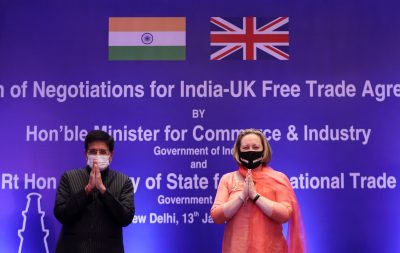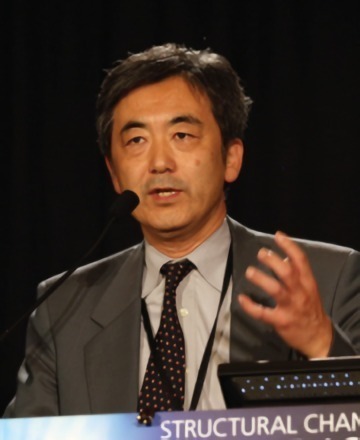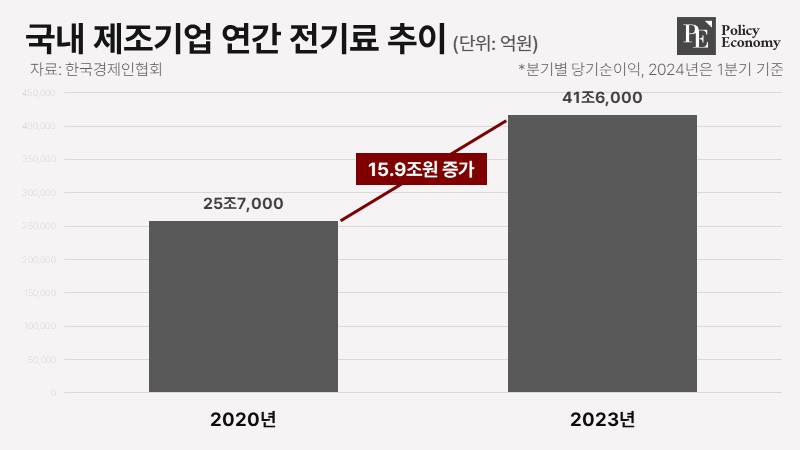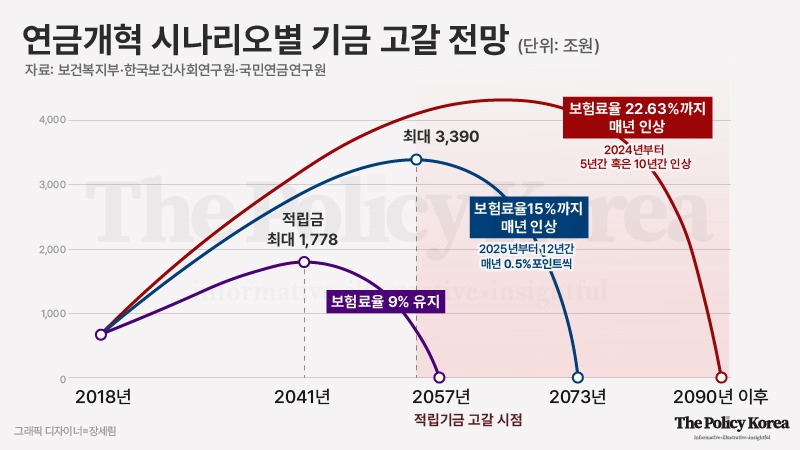[동아시아포럼] 인도 FTA 실패의 역사, 그리고 새로운 여정
2022년 이전 인도 FTA 모두 실패해 비대칭 관세, 인증 기준, 기술 격차 등이 이유 새로운 전략으로 FTA 나선 인도, 효과 거둘까
[동아시아포럼]은 EAST ASIA FORUM에서 전하는 동아시아 정책 동향을 담았습니다. EAST ASIA FORUM은 오스트레일리아 국립대학교(Australia National University) 크로퍼드 공공정책 학교(Crawford School of Public Policy) 산하의 공공정책과 관련된 정치, 경제, 비즈니스, 법률, 안보, 국제관계 및 사회에 대한 연구·분석 플랫폼입니다.
저희 폴리시코리아(The Policy Korea)와 영어 원문 공개 조건으로 콘텐츠 제휴가 진행 중입니다.
2012년 전까지 인도가 진행한 FTA는 모든 국가에서 무역 수지 적자를 내며 실패를 거뒀다. 전문가들은 FTA에 체계적으로 대응하지 못한 인도 정부의 책임을 지적했다. 그 후 인도는 약 10년간 준비를 통해 지난해 아랍에미리트와 호주를 시작으로 다시 FTA에 나섰다.

실패로 점철된 인도 FTA
인도는 자국 무역 확대와 투자 유치 증대, 천연자원 확보, 글로벌 가치 사슬(value chain) 진입을 통한 국내 제조업 육성 등의 목적으로 현재까지 13개의 자유무역협정(FTA)을 체결한 바 있다. 인도는 자국 FTA 전략을 크게 두 가지로 구분해 진행 중인데, 비슷한 경제발전 단계에 있는 인접국을 대상으로 한 경제 관계 발전형 FTA와 자국 투자 유치 확대와 상대국으로부터 수입 급증 및 제3국을 통한 우회 수입 배제를 목적으로 하는 상대적 선진국 대상의 FTA다.
인도의 전문가들은 비교적 전략적인 유형별 FTA 진행에도 불구하고 2022년까지 인도가 진행한 FTA는 모두 실패했다고 입을 모은다. 그도 그럴 것이 2017년부터 2022년까지 FTA 대상국 인도 무역량 자료에 따르면 FTA 대상국에 대한 수출량은 31% 증가했고, 수입량은 82%로 급증한 것으로 나타났다. FTA를 통해 무역 적자를 본 셈이다.
전문가들은 FTA 이후 무역 적자의 주요인으로 인도의 낮은 FTA 활용률을 지목한다. 실제로 선진국의 평균 FTA 활용률은 70~80%지만 인도의 FTA 활용률은 25% 수준이다. 이같은 수치는 인도의 낮은 FTA 활용률은 인도가 양자 및 다자간 무역 협정의 혜택을 제대로 활용하지 못한다는 사실을 증명한다. 기존 FTA의 비효율과 실질 활용 미비를 확인한 인도 정부는 FTA 전략을 전면 재검토하기 시작했다.
계속된 FTA 실패 원인은 ‘준비 부족’
인도가 체결한 FTA가 낮은 성과를 보인 근본적인 이유엔 협상 과정에서 관련 업계 및 이해관계자 간의 협의 부족이 거론된다. FTA를 추진한 인도 정부 관계자들은 FTA 협의 시 관련 산업, 기업 및 협회 대표들을 참석시키지 않았다. 이렇다 보니 FTA에 관련된 산업에 대한 이해가 부족했고 하나의 FTA 조건이 다른 산업에 미칠 잠재적인 경제 영향을 고려하지 못했다. 이뿐만 아니라 인도가 진행했던 기존 FTA는 정부의 독단으로 진행된 데다 자국 내 업계의 비판적 견해는 배제한 상태로 인도 시장에 FTA 대상국이 진입했다.
아울러 무역 대상국 확대에만 골몰한 탓에 인도의 실질적 이익을 위한 관세율 협상에도 실패했다. FTA 체결 전 인도의 높았던 수입 관세율이 FTA 체결로 인하되면서 FTA 대상국이 인도 시장에 더 깊이 진출하는 결과를 낳았다. 반대로 인도는 대상국의 엄격한 수입 기준과 위생 인증, 기술 장벽과 같은 비관세 장벽을 넘지 못해 수출 기회가 제한됐다. 실제로 인도는 일본과 FTA를 체결했음에도 일본의 높은 수입 기준에 의해 수출이 정체된 상태다.
또 인도 기업들은 FTA에 규정된 국제 인증 요건과 원산지 규정이 복잡한 탓에 수출 업무의 프로세스를 간소화하는 데도 어려움을 겪고 있다. 인도 업계 관계자들은 “인도 수출기업이 기존에 경험해 보지 못했던 복잡한 절차와 서류 업무로 인해 FTA에 규정된 기준을 충족하기 어려울뿐더러 원산지 증명서 발급에 필요한 비용 부담으로 인해 FTA 대상국 수출에 난항을 겪고 있다”고 토로했다.
FTA 발효 후 인도 정부가 관련 산업 이해관계자들에게 FTA와 관련된 교육 진행이나 내용 전달을 하지 않은 것도 FTA 성과 저하의 요인으로 지목된다. 인도 정부는 FTA 발효 후 FTA 혜택과 방식에 대한 수출기업 대상 홍보 활동을 거의 진행하지 않았다. 현재도 많은 인도기업들이 기발효된 FTA를 통해 얻을 수 있는 혜택과 잠재적인 성장 가능성을 제대로 이해하지 못하고 있는 실정이다.
한국, 말레이시아, 베트남, 태국 등 주요 FTA 대상국과 인도 간의 제조업 기술 격차도 인도 FTA 성과 저하 요인으로 꼽힌다. 한국을 비롯한 대상국 대다수가 전자, 자동차, 가죽, 섬유 등 주요 산업 분야에서 인도를 앞서고 있다. 한국과 아세안 국가들은 오랜 기간 연구 개발, 기술 혁신, 정부 지원, 산업 가치 사슬 발전 등의 노력을 통해 저비용으로 고품질 제품을 생산할 수 있는 제조업 성장을 이뤘다. 하지만 인도는 여전히 정체된 기술력과 노동집약적 제조 방식을 고수하며 낮은 가격 경쟁력을 유지했다. 이렇다 보니 특정 제품군의 경우 한국과 아세안 지역에서 수입한 가격이 인도 제품의 가격보다 저렴한 것도 있다.
변화의 시작, 실패 인정과 10년의 준비
이같은 지적이 잇따르자 인도 피유시 고얄(Piyush Goyal) 상공부 장관은 공식 석상에서 기존 FTA가 잘못 설계됐다고 인정했으며, 인도 정부 역시 기존 FTA의 결함을 인지하고 재검토에 착수했다. 그 후 인도는 FTA 체결에 신중론을 보이며 약 10년간 FTA에 대한 체계적인 전략 준비를 마치고, 지난해 아랍에미리트와 포괄적 경제동반자 협정(CEPA)을 체결한 데 이어 호주와 경제협력무역협정(ECTA)을 체결하며 다시 적극적인 FTA에 나서고 있다.
CEPA 체결 후 불과 몇 달 만에 아랍에미리트와 호주에 대한 인도 수출량이 크게 증가했으며, 기존 FTA 대비 FTA 활용률도 대폭 증가했다. 현재 인도, 아랍에미리트, 호주는 수출입 증가뿐만 아니라 무역 인프라 강화, 분쟁 해결을 위한 패스트트랙 시스템 구축, 무역 절차 디지털 전환 등 다양한 분야에서 상호 발전이 진행 중이다.
현재 인도는 비효율적이고 불공정했던 기존 FTA를 수정·보완해 새로운 전략 접근으로 무역을 통한 경제적 가능성을 높이고, 이를 통해 정치·전략적으로 이해관계가 일치하는 파트너 국가와 협력 관계에 나서고 있다. 또한 수출 증대를 위한 관세 인하와 탄력적인 상호 공급망 구축, 생산 구조 통합, 디지털 무역, 친환경 산업 전개 등을 우선순위에 두고 FTA를 진행 중이다. 특히 인도는 FTA 주요 후보국 대비 높은 관세를 유지하고 있어 관세 인하만으로 기대할 수 있는 국가적 이익이 제한적이기 때문에 기술 이전 및 확산과 결합한 FTA 조건으로 비대칭적 관세로 인한 무역 수지 적자를 완화할 수 있는 외국인 직접 투자 유치에도 노력하고 있다.
나아가 새로운 FTA 전략을 통해 투자 지속, 기술 접근의 용이성, 지속 가능한 무역을 제공할 수 있는 경제적 동맹국을 물색 중이다. 전문가들은 이미 FTA 실패를 경험해 봤기 때문에 이전 실패를 교훈 삼아 새로운 FTA 여정에 나서야 한다고 조언한다. 글로벌 영향력 확장을 위한 양자 간 FTA 외에도 지역별 다자간 FTA 및 경제 포럼 추진도 중요하다. 국가적 차원의 노력뿐만 아니라 실제 인도 기업의 경쟁력 강화와 수출 비관세 장벽을 낮추기 위해 인도 기업의 기술, 업무 인식 개선에도 노력해야 성공적인 FTA와 국가 경쟁력 성장을 이끌 수 있을 것이다.
What went wrong with India’s FTAs?
India has so far signed 13 free trade agreements (FTAs), all of which differ in their scope and nature. But the majority of these agreements have failed to produce their desired results and have contributed to India’s high trade deficit. India’s imports from its FTA partners have increased more than its exports.

In the period between 2017 and 2022, India’s exports to its FTA partners increased by 31 per cent, while its imports increased by 82 per cent. India’s FTA utilisation remains very low at around 25 per cent, while utilisation for developed countries typically sits between 70–80 per cent. This low utilisation highlights India’s alarming failure to take advantage of the benefits made available through its bilateral and multilateral trade agreements. Recognising the ineffectiveness of these FTAs, the Indian government began reviewing them in 2019.
One of the fundamental reasons for the negligible progress of India’s FTAs is the lack of adequate industry and stakeholder consultation during the negotiation process. Negotiators have failed to involve representatives from relevant industries, businesses and associations, resulting in a narrow understanding of the FTAs’ potential impact on various sectors. This has led to market access being granted to FTA partners without considering critical views and concerns from domestic industries.
While India’s pre-FTA most favoured nation tariff rates were higher than those of its partners, the FTAs led to a reduction in tariff rates, enabling partners to penetrate deeper into the Indian market. But non-tariff barriers such as stringent standards, sanitary and phytosanitary measures and technical barriers to trade persisted, confining Indian exporters’ access to partner markets and limiting export opportunities. For example, despite having an FTA with Japan, Indian exports have remained stagnant due to Japan’s high import standards.
The complexity of certification requirements and rules of origin under the FTAs have hindered India’s ability to streamline processes for exporters. The arduous procedures and paperwork have made it difficult for exporters to meet prescribed standards and the high cost of certificates of origin has also increased compliance costs.
The government’s lack of comprehensive efforts to popularise FTAs among industry stakeholders after their implementation has hindered the FTAs’ effective implementation. After the FTAs came into effect, there were limited outreach activities and inadequate marketing to create awareness about their benefits among exporters. Many exporters do not know about the incentives and potential advantages available to them under the FTAs, resulting in underutilisation of the agreements.
The disparity in the performance of the manufacturing sectors in India and its FTA partner economies such as South Korea, Malaysia, Vietnam and Thailand has been another factor hindering the FTAs’ progress. South Korea and ASEAN’s manufacturing sectors outperformed India’s in critical industries such as electronics, automobiles, leather and textile products, among others.
ASEAN’s focus on research, innovation, government support and upgrading value chains has allowed ASEAN member states to produce goods at a lower cost, enhancing their global competitiveness. But Indian manufacturers face challenges that make importing from ASEAN and South Korea more cost competitive than domestic production.
India has recognised the flaws in its existing FTAs and has initiated their review, with the Indian Minister of Commerce and Industry Piyush Goyal acknowledging that earlier FTAs were poorly conceived. India has now refrained from signing any FTA for about a decade. But India renewed its interest by signing the Comprehensive Economic Partnership Agreement (CEPA) with the United Arab Emirates and the Economic Cooperation and Trade Agreement (ECTA) with Australia.
Surprisingly, India’s exports to both countries have shown a significant increase just a few months after the conclusion of the CEPA and remarkable FTA utilisation statistics have also been reported. Along with trade agreements, other crucial developments include boosting trade infrastructure, setting up a fast track mechanism to dispute settlement and digitising various procedures.
India is now adopting a fresh approach towards FTAs and engaging with partners that have high potential to increase trade and are politically and strategically aligned. India’s new FTA strategy seeks reliable and robust supply chain allies that will provide investment, technology access and sustainable trade. Along with lowering tariffs, priorities include building resilient supply chains, production integration, digital trade and environmental protection.
As India embarks on a new journey with FTAs, it should consider its learnings from earlier agreements, especially with regards to industry consultation. India should strive to reduce non-tariff barriers for exporters and create awareness of the benefits of FTAs to help multiply their utilisation.
As India maintains considerably higher tariffs than many of its potential FTA partners, the expected gains from tariff reduction alone appear limited. But forging FTAs with advanced economies could yield a substantial inflow of foreign direct investment which, when combined with technology diffusion, has the capacity to offset the revenue setback from foregoing tariff collection and may even mitigate a negative trade balance.
In addition to bilateral FTAs, India should also assess the viability of participating in multilateral forums considering its domestic constraints.
원문의 저자는 인도 뉴델리 소재 글로벌 회계 기업 EY LLP의 무역 이코노미스트 라훌 나스 초두리(Rahul Nath Choudhury)입니다.



























